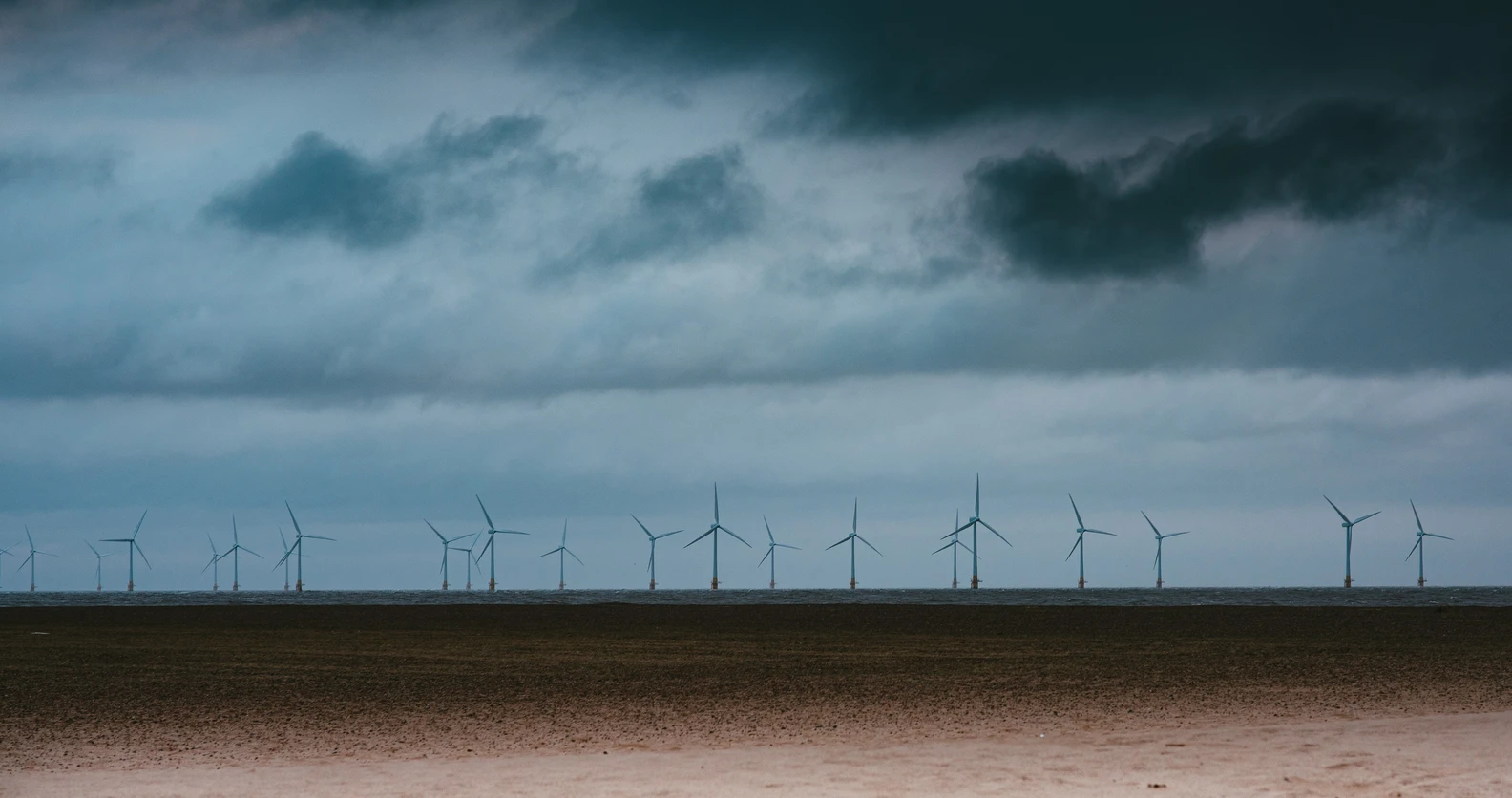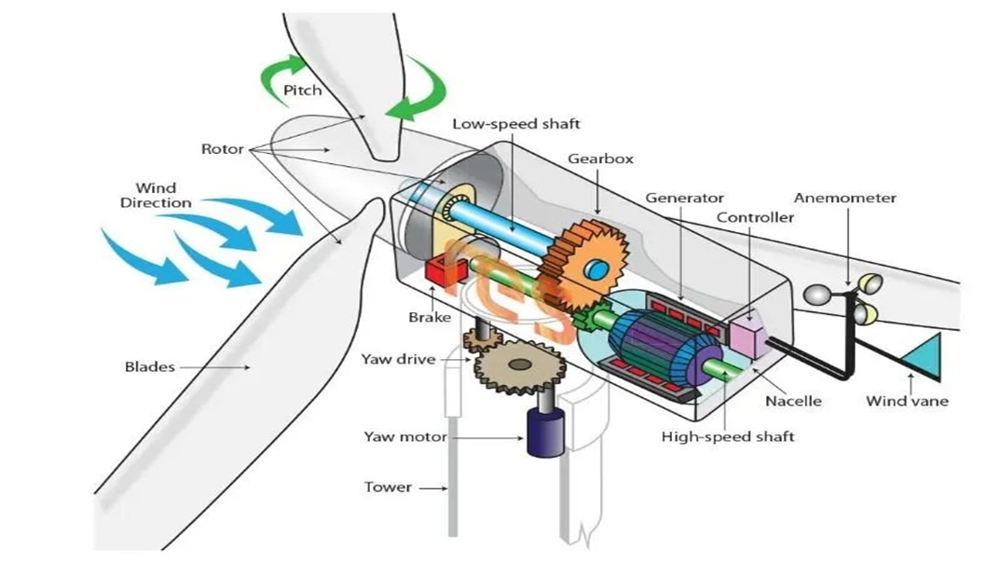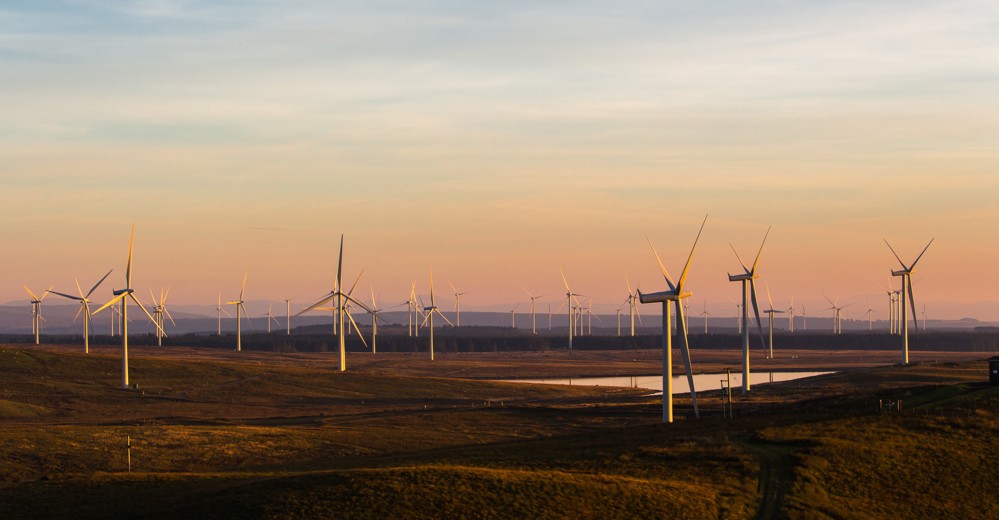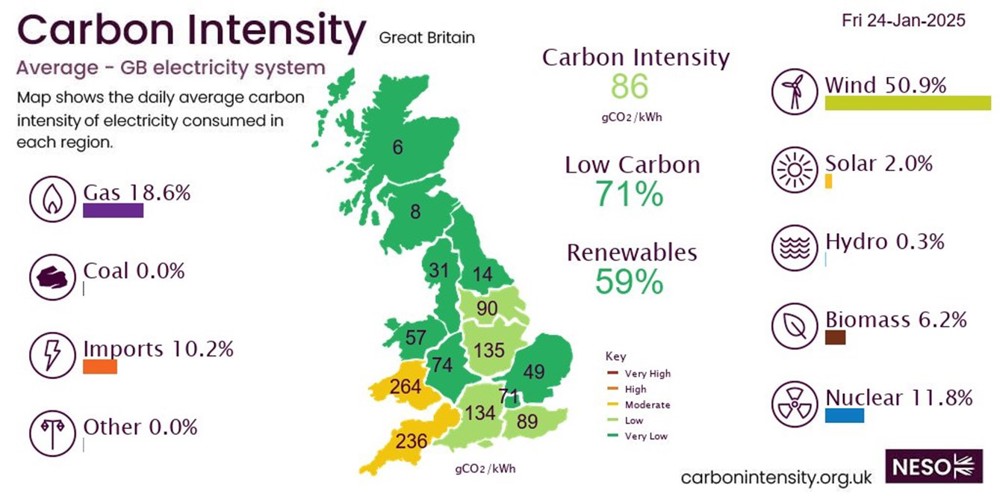David Stewart, Senior Social Media and Communications Officer, and Sam Sheppard, Senior Communications and Campaigns Manager
05/02/2025 | Onshore wind



A guide to wind farms in storm conditions
5 February 2025
As Storm Eowyn reached near-record 100mph wind speeds in January, leading to widespread damage and power outages across central Scotland and Ireland, there was confusion in certain quarters at the sight of wind turbines being temporarily shut down and wind energy curtailed.
Contrary to some reports, turbines temporarily shutting down did not cause power cuts. These were caused by the storm itself, primarily due to power lines being blown over or knocked down by falling debris. Sadly, no form of energy or fuel is completely secure and extreme weather events have caused power cuts since long before wind energy existed.
But why did the turbines power down at all? Isn’t high wind good for them?
Anyone who has ventured outside during a storm will be aware that high winds typically occur in short bursts. The vast majority of the time we experience more moderate winds. Modern wind turbines are therefore designed to automatically power down for short periods, often merely minutes at a time, when gusts of extremely high wind cause them to exceed safe limits and risk being damaged. Unlike other forms of energy infrastructure such as pylons, which cut off when damaged or in danger, and remain down until manually repaired or reset, wind turbines are able to power down pre-emptively before bringing themselves back online once it is safe to do so.
Persistent gusts of high wind, known as ‘string jets’ can last several minutes but are comparatively rare, meaning turbines are able to spend the overwhelming majority of stormy periods operating safely and effectively. Thanks to built-in anemometers that measure local wind speeds and adjust the nacelle and blades of the turbine automatically, they are able to optimise their efficiency and continue generating power, typically only stopping generating at two-minute intervals, before restarting once the wind speed has reduced.

Modern turbines are designed to be able to power down and feather out their blades against the wind, in much the same way as an aeroplane gyroscope behaves during periods of high turbulence, which is why we very rarely see planes fall out of the sky. This prevents the machinery of the turbine being overloaded and broken, which would result in it being unable to generate any power for days or weeks until repair.
Do entire wind farms power down?
This process can occur on an individual turbine-by-turbine basis, or be split into ‘zones’. Take for example the UK's biggest onshore wind farm, Whitelee Windfarm, which covers an area larger than Glasgow City and boasts over 215 turbines generating 539MW at full capacity. During extreme weather events such as Storm Eowyn, each turbine or zone automatically measures local wind speeds and adjusts or switches off accordingly, meaning occasions when the entire windfarm power down are vanishingly rare.

Turbines 1 to 75 may power down at one end of the site, whilst turbines 76 to 215 will keep turning dozens of kilometres away. This type of flexibility is far more difficult to achieve for large power stations, which are typically either on or off in their entirety, and can take hours to power up and down compared to mere minutes for wind turbines.
Is overall generation affected?
Crucially, when wind turbines are operating in extreme weather scenarios, they are doing so at a higher capacity. This means a situation where turbines operate for 20 hours out of a given 24-hour period will still result more total power generated than on a full light, breezy day.
Recent figures from the National System Energy Operator show exactly this, with wind power providing by far the largest share of our electricity on 24 January at the height of the storm. Even in this period of disruption and temporary curtailment, wind still provided 49% of our electricity, with no half-hour period falling below 38%, and some periods rising as high as 70%.

It’s important to remember that no form of energy generates at full capacity, at all times. In fact, gas and nuclear power stations that are damaged or curtailed by extreme weather can often be powered down for days, or even weeks. Extreme weather has never caused wind turbines in the UK to be powered down for days at a time, and typically only does so for a matter of minutes, or for a handful of hours in the most challenging circumstances.




